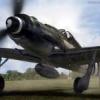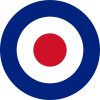Search the Community
Showing results for tags 'Beaufighter'.
-
At approximately 1230 hrs on 12th June 1942 a single Beaufighter Ic, crewed by Flt Lt. Ken Gatward at the controls and guided there by his navigator Sgt. Gilbert Fern, roared along the Champs-Elysees at rooftop height to drop a French flag over the Arc de Triomphe and then flew to the Place de la Concorde where they strafed the Kreigsmarine headquarters with 20mm cannon fire and dropped a second French flag over it. This event, the express purpose of which was to raise morale of the French people and remind them they had not been forgotten, was Operation Squabble. Ever since I read about the event I've wanted to model the 236 Sqn. Bristol Beaufighter Ic that took part. Although it is known to be coded ND-C there is some speculation if it carried the serial T4800 as shown in a photograph of a Beaufighter carrying the code letters taken a month or so later. Since nobody can confirm with any certainty whether or not this was the case or otherwise let's go with it as best guess for the purposes of this project. Tamiya's 48th scale kit provides a decent basis to backdate from the Mk. VI and was the only option in 48th when I started this one a few years ago. The wings have been assembled and some minor corrections to the panel lines done then a bit of detail added inside the fuselage, still more to do there, the crew figures are the kit parts slightly modified but with hindsight they still need oxygen masks fitted across their faces. The stalling point had been at the engines so I've returned there and got the cowlings cleaned up. One of standard kit parts in the background with the two modified parts for comparison. Removed the small bulges, tidied up the mold lines, and removed the intakes from the front of each exhaust pipe. A section of plastic strip to cover the inside of that exhaust molding finishes the cowl for now. Engines next and trying to recreate to individual exhaust pipes from each cylinder.
- 76 replies
-
- 29
-

-
- Beaufighter
- Tamiya
-
(and 1 more)
Tagged with:
-
Hi All, this will be my entry in this GB: Matchbox's venerable Bristol Beaufighter in 1/72 scale. A big shout out of thanks to Pat @JOCKNEY for this kit - cheers, Pat! Matchbox kits have a lot of memories for me: as a child of six or seven, sitting next to my Dad in the evening after dinner and watching him build a new kit. The Beau' was one of them, and almost fifty years later I still have it, slightly the worse for wear and in need of some TLC. I lost my Dad as we entered the new millennium, so this build will be a slice of nostalgia for me I've already decided that it will be a bit more detailed than OOB but, with the exception of decals, there'll be no after-market - all additions will be scratch-built. I'm also undecided on which version to build. The kit purports to represent the TF.X of course, but given its various shortcomings (engine cowlings, short-span tailplanes etc) I'm thinking maybe a Mk.I. Anyways, to the photographs. The wonderful box art: Fabulous! Look at those gopping colours peeping through the window: Just in case we were in any doubt, this is an ORANGE SERIES kit! The decals actually look okay! It's tempting to try the national insignia, depending on what scheme I choose. Eugh! EUGH! EUGH! Made a start on the kit over the weekend. The wing panels were assembled, which took about thirty seconds, clamped and set aside to dry, and I then turned my attention to the fuselage interior. Now I know one shouldn't make models of models, but using pics of a modern Airfix Beau' TF.X build I set about adding some internal detailing. I started by removing the lugs for the kit's rudimentary seats and scraping/sanding smooth, and at the same time thinning the edges of the cockpit openings. A framework was then added from 20thou' square styrene. Using a profile gauge, I marked and cut out a floor which was carefully sanded to shape and added to the starboard side. Then, using various offcuts of styrene sheet and strip, I began to construct a front office. Here's where I am at the moment: And a bit of a close-up: The seat and frame will be next, and then the Observer's station, rear spar thingy, and maybe some other details like ammunition boxes. I haven't decided yet how I'll tackle the Pilot's control consoles but I'm considering something like finding a picture and printing it to size, and then gluing on the printed image. Although I'm doing a fair bit to the interior, it won't be bells and whistles as the transparencies are quite thick. Having said that, however, a first dip in Future has shown that they're actually quite clear, so the inside definitely needs some dressing up! Thanks for looking in. Cheers, Mark
- 17 replies
-
- 21
-

-
Morning all, sorry I’m late. Now that the Recce GB is over and my build for the Airco/de Havilland GB is in the final straights, I thought I ought to focus on choosing something suitable (and which I might finish inside the deadline) for this GB. Was thinking of doing the Trumpeter wheeled S-300, but at 1/35th, that isn’t large enough for armour. Then thought about doing the Motörhead tour truck but at 1/32nd that’s not large enough for vehicles. Then I thought 1/32nd Westland Whirlwind, but I see we’ve got one of those in progress already. Perhaps Ye Olde Revell 1/32 Beaufighter that’s been in the stash for years (maybe decades)! Looks like I may have to “go large” and choose from from one of the Airfix 1/24th Spitfire, Typhoon or Mosquito that are all in the stash. 🤔 Mind you, I need to have some chance of finishing the build in the remaining part of the GB. Decisions, decisions!
-
Hi all, this build has been a long time in the making. I had intended for it to be a relatively quick and stress-free build but it ended up being a slog at times and sat unfinished for a while. The kit is the 1/48 Tamiya Mk.X and was a breeze to put together, it's a great kit. The decals are the Avalon IAF Beaufighter set and caused me some issues, they were quite thin and the Star of David in the centre of the roundel ended up semi-transparent so the paint job can be seen underneath. Furthermore I can't actually verify that any of the Israeli Beaufighters actually wore RAF day colours but the option was there and I had the Ammo paint set on hand so went for it. The decals combined with a few silly mistakes on my end like using the wrong tail and ballsing up the camouflage scheme in places meant it sat in a box for a while untouched but I decided to just use it as weathering practice and managed to get it looking somewhat presentable so here it is: Thanks for looking in!
- 4 replies
-
- 25
-

-

-
- Tamiya
- Beaufighter
-
(and 1 more)
Tagged with:
-
This model depicts the well-known ‘R Robert’, the regular mount of John Cunningham and Jimmy Rawnsley during the winter of 1940-41. R2101 was delivered to 604 Squadron in late 1940, and was lost on operations in May of 1941. R2101 was one of the first batch of Beaufighters to enter squadron service, and has the features unique to these early machines. I used Tamiya’s 1/48 scale Beaufighter mk VI, first released in 1997, as the starting point for this build and made the necessary changes with a combination of available aftermarket parts and some scratchbuilding. In doing this I extended my knowledge of the visual appearance of these early airframes, and made one critical change that I had missed on my earlier build of R2069, a 25 Squadron machine from the same initial batch of Beaufighters. Being equipped with drum-fed cannons, the cartridge ejection slot arrangement under the belly differs from later belt-fed Beaus. It looks like this. Other noticeable external differences for these early Beaus are the absence of wing guns, the early style of heavily framed cockpit canopy, smooth rather than porcupine style exhausts, a VHF antenna mast under the cockpit and no HF mast or aerial, short squared off carburettor intakes with auxiliary intakes piggybacked, no louvres to the oil cooler fronts, early five spoke wheels, twin formation lights on the rudder, and a short mast - probably a foresight - just in front of the canopy. Belly ID lights also differ, being raised rather than recessed. Oh, and the reflector gunsight is a GJ3, adapted from the style used in bomber turrets, as the regular Fighter style gunsight originally fitted to Beaus obstructed the pilot’s view. It is attached to the inside framing of the vacuform canopy. Having completed one early Beau in the Temperate Land Scheme of Dark Earth, Dark Green and Sky, I very much wanted to depict a Nightfighter Beau in RDM2A, Special Night. This was a pure carbon black paint, and differs from the usual RAF Night, which is a mixture of black and ultramarine pigments and is hence a very dark blue-black or blue-grey. RDM2A also differs from ordinary Night in starting out as a very matt finish, described at the time as a sooty or velvet black. The finish wore quickly and badly. It was easily scuffed, prone to peeling in the slipstream to expose areas of underlying ordinary night - used as a first coat to economise on the scarce RDM2 - and chipped right back to the bare airframe in places. Wear and tear was exacerbated by the style of close in combat necessary to achieve kills in nightfighting. Jimmy Rawnsley in his biography ‘Night Fighter’ vividly describes how the aircraft was engulfed in flames and debris from shattered German bombers as John Cunningham closed in to make destruction certain. I tried to stick closely to the way the plane would likely have been painted. Ordinary Night (Colourcoats Night Bomber Black) forms an undercoat, while Colourcoats Matt Black forms the top coat, thinly sprayed and with wear and scuffing shown by lighter mottled coats toned down with a little matt white added to the mix. The peeled sections showing through were covered with torn pieces of masking tape and sprayed over, then removed. I didn’t want to use any gloss or matt varnishes over the paint, to preserve the variations in sheen, so all of the markings are sprayed on, using both home made and aftermarket masks. These were applied over the ordinary night, then masked as the final RDM2 layer was sprayed on. You may note that the individual aircraft letter is larger than the squadron codes, this as per the available photos of this aircraft, as is the irregular distancing of this letter to the roundel on the right and left sides. I left off the ‘3’ that can be seen on the port engine nacelle, as this was a delivery marking and probably painted over. The markings depicted would have been current from around December 1940 to around February of 41, when underwing roundels were ordered removed. It’s also possible that, like many Beaufighters operating at night, this aircraft had its engine collector rings painted over with HTP 41, a high temperature paint that bakes on to hide the ‘glow’ from the heated surface. This paint starts out as pink, and then darkens to a dull, reddish brown. I have also done quite a bit of work inside the plane. Yes, the full set of AI Mk IV boxes are in the back, within kicking distance of the observer’s seat. Sadly most of this is not visible, but if you are interested, my WIP details the changes. That also lists all of the aftermarket bits I have used, but it is worth noting here the Aerocraft 3D cowlings and Hercules engines as they are far superior to those that came with the kit. My principal references for the build were the excellent Wingleader Photo Archive No.10, Andrew Thomas’ ‘Beaufighter Aces of World War 2’ and the old Ducimus Beaufighter Camouflage and markings. This last publication has the ONLY accurate side profile of R2101 I have seen, as every other publication gets some aspect of the markings wrong, as does every decal sheet I have seen. The IWM online photo collection also proved invaluable as usual. If you want the flavour of what it took to fly and fight at night then C.F. Rawnsley’s Night Fighter remains an outstanding account. Hope you enjoy!
- 8 replies
-
- 29
-

-

-
- beaufighter
- 1/48
-
(and 1 more)
Tagged with:
-
¡Hola amigos! As I advance in the history of the Pacific Campaign during WWII, the actions in the South Pacific get more and more interesting. The passage of the complete anihilation of a Japanese convoy to New Guinea in the so called "Battle of the Bismarck Sea" in March 1943, made me stomp with the feared Bristol Beaufighter. What a beast! I picked up the good ol' Tamiya kit of the Mark VI and started the really enjoyable building of the model. It is mostly OOB except for the letters that identified her as a member of 31st Squadron based in Coomalie Creek during 1942-43, that came from NZ Ventura decals. Very helpful about the usage of TSS, TLS and later Foliage Green (on the Aussie Mk.21 Beau) was a particular forum and debate here in Britmodeller (special thanks to @Sydhuey @Ozhawk40 @Biggles81 and @Nick Millman). All the best, Cris.
- 22 replies
-
- 49
-

-

-
- Beaufighter
- RAAF
-
(and 1 more)
Tagged with:
-
Well here we go again! I enjoyed building the Tamiya 1/48 Beaufighter as one of the early production machines so much, that I thought it would be nice to build yet another, but as an early Nightfighter in the Special Night RDM2A scheme. I have selected R2101, coded NG-R. This was famously a machine most often flown by the intrepid team of John Cunningham and his Radio Observer, C.F, ‘Jimmy’ Rawnsley. Like my previous build, R2069, its a much modelled machine so my apologies to those thirsting after novelty. R2101 was one of the first batch of production Beaufighters produced by Bristol at Filton, and was amongst the first fitted with AI radar. As a very early Beau, the machine is fitted with the early style of canopy, no wing guns, square style short air intakes, and drum fed 20mm cannons. There are a range of other differences, which I hope to highlight as the build progresses. Revell offer this plane as one of its marking options in its very nice 1/48 kit, though the kit contents doesn’t allow you to build an accurate R2101. The canopy, air intakes and exhausts in the Revell kit are all more typical of slightly later machines, so modification is required anyway (unless you change the serial and model the second NG-R, which replaced R2101 when it was lost in May 1941) Given this, and that the key and hardest element needing changing is the canopy, I have settled on using the Tamiya kit as a base. This is because you can get an excellent Falcon vacform canopy that depicts the early style and is designed, with suitable modifications, to fit the Tamiya kit. the Tamiya kit is also a simple build with good fit which makes it easier to focus on the modifications to make an early Beau. I have a list from the research I did for the previous build, and have added to it by further staring at photographs. I managed to cut and trim the Falcon vacform canopy without ruining it, so the build can begin!
-
I present for your inspection my just completed Beaufighter? This Beaufighter Mk VI(f), EW-Z, EL154 served with 307 Squadron at RAF Clyst Honiton, now Exeter Airport, between 7 Aug. 1942 and 13 Feb. 1943: "Z" was usually flown by the crew Damsz/Sylwestrowicz. The aircraft is finished in the then new night fighter colours of Medium Sea Grey overall, with Dark Green disruptive on the upper surfaces. Photographic evidence suggests the aircraft was in this finish by late winter 1942. No. 307 (City of Lwów) Polish Night Fighter Squadron was a night fighter squadron formed in Great Britain on 24 August 1940 following an agreement between the Polish Government in Exile and the United Kingdom. It was the only Polish night fighter squadron fighting alongside the Royal Air Force during World War II. 307 Squadron is named after the Polish city of Lwów, and nicknamed "Eagle Owls". This a/c, a Mk VI(f) was the 9th Beaufighter off the line at the Shadow factory just outside RAF Weston Super Mare. In total 1078 Mk Vis were built at Bristol, Weston and by Rootes. After service with 307 Squadron she transferred to No 488 (NZ) Squadron, reformed on 25 June 1942 at RAF Church Fenton, Yorkshire, as a night fighter 'intruder' unit equipped with Beaufighters. The squadron aircraft carried the code letters ME. I cannot find any information about her use with 488 Squadron, but as the Beaufighters were replaced by DH Mosquitos in late 1943 she was probably struck off and scrapped as a she would have been over 12 months old and the Mk IV radar obsolete. The Mosquito replacements had the much more capable Mk VII “centimetric” radar. The Build has been described in the "Work In Progress" board, where I detailed all the changes and modifications. The build went smoothly, I'm reasonably happy with the result, given the starting material. I've discovered errors that could have been corrected, but when discovered it was too late. Many thanks indeed to everyone who helped and answered questions as the work progressed. So, now from the front: From above: From the back And from underneath! This was my first attempt at airbrushing and at using washes to ad effect. Still a bit to learn, I feel! Comments, advice and suggestions most welcome...!!
- 25 replies
-
- 47
-

-
- RAF
- 1/32 Revell
-
(and 1 more)
Tagged with:
-
This is a backdate of the Tamiya VIF Beaufighter to depict R2069, one of the very first Beaufighters taken on strength by a frontline squadron in early September 1940. The most useful reference for this build was the Wingleader Photo Archive as it contains very large and very clear photos of this airframe, and other early Beaufighters in squadron service. R2069 was photographed prior to the application of an individual plane in Squadron code letter and only carried the ‘ZK’ squadron codes. It seems to be traditional to depict this aircraft as ‘ZK-A’, but I couldn’t find confirmation of this from the references I could source, so I left it as depicted in the photos. It’s possible that this, and other early machines, had various bits and pieces added or subtracted as their service life progressed, but this is a case of modelling what was there ‘on the day’. Early production Beaus, probably the first fifty or so, had significant visual differences from later IF’s or IC’s. They were not equipped, at least initially, with the .303 guns in the wings, and had a distinctive and more heavily framed cockpit canopy. The engines had short, squared off air intakes, with small piggybacked ducts which were apparently part of an early heating system. Because of this the exhausts also lack the twin air intakes seen on slightly later aircraft. The wing leading edge oil cooler faces lacked the louvres and control rod seen on later aircraft. These were most probably added to later airframes to allow faster engine warm up with cold starts. Some early aircraft, R2069 being one, had a short mast directly ahead of the pilot’s canopy - I think this may be part of a fixed iron gunsight system. It shows on the early 25 Squadron airframes shown in the Wingleader Archive, and on some of the prototypes pictured in the book as well. R2069 was fitted, at the time of the photograph, with a VHF radio, with a mast underneath the nose. It lacks the usual dorsal mast associated with the earlier HF radio, and has no external aerial wires for either radio or IFF. The Wingleader photos do show that it had the wire aerial anchor fitting attached to the fixed rudder, so I also modelled a cover plate for the missing HF aerial mast. I am also pretty sure from the photos that these early Beaus had slightly protruding teardrop style fairings for the belly identification lights. I did model the early drum feed for the cannons, but honestly, you can’t see them once the plane is zipped up. Everything else is typical of the Beaufighter IF - smooth cowlings, flat tailplane, early tailwheel, early wheel hubs, twin formation lights on the rudder, Rotol style prop spinners. Beyond the changes needed for a IF the Tamiya kit assembled itself, a real credit to the firm’s engineering given it dates from 1997. The excellent vacuform canopy came from Falcon and the kit cockpit outline needed a little reshaping for it to fit, the resin tailplanes are from Red Roo, the wheels from CMK, and I modified Red Roo resin oil cooler faces to the early style. I stole two Rotol spinners from Eduard Spitfire kits - they aren’t right but look more the part than the late war/post war spinners in the Tamiya kit. If I were to do another I would spend more time detailing the cockpit as it remains quite visible behind all those extra frames. All paints are enamel Colourcoats, weathering was limited to a Flory grimewash to pick out the panels, some restrained chipping added by Silver pencil, and a bit of exhaust stain from Tamiya weathering pastel. Oh, and Humbrol gloss oil stain, because it’s British and it wouldn’t look right without oil leaks. It was a very new aircraft at the time of photographing so forget paint fading etc. National markings are a mixture of new Airfix decals, Fundekals, and rudder stripes modified from a bigger 1/32 fin flash. Squadron Codes were painted as I couldn’t find anything to match in the spares box. cheers Steve
- 10 replies
-
- 44
-

-

-
- beaufighter
- 1/48
-
(and 1 more)
Tagged with:
-
I am having a bit of a break from building large ships, and have decided to do some pre,during and immediately post Battle of Britain RAF and FAA builds. I’ve completed a Hurricane, Defiant, and two Spits, all in 1/48, and have started in on the larger planes in service or coming into service during 39-40. I just plain like the early RAF camouflage schemes with all their variations, and the FAA equally, and its an interesting period historically, where the RAF was undergoing rapid development in its organisation, doctrine, tactics and equipment. I was in two minds about starting a WIP about this particular build, but I thought I would post some progress photos and also draw on the collective wisdom on the forum when it comes to RAF aircraft in 39-40. For the twins, I’ve started in with one of the first Beaufighters to see service, but haven’t yet decided on the precise airframe. There are only a few reasonably documented aircraft from this period, so the choices are few. Its likely to end up being the well-modelled R2069 from 25 Squadron, or possibly a slighter later aircraft from 252 Squadron. I am tending towards R2069 because that fits the period and the photos of the 252 Squadron aircraft may be from early 1941. Also, the excellent side view published in Wingleader ‘Bristol Beaufighter’, puts the serial number for R2069 and its presence in 25 Squadron beyond doubt as long as you only use the Squadron Codes and not an individual aircraft letter. I’ve used the old but still good Tamiya Mk VI kit as the starting point rather than the newer, but reputedly more tricky Revell 1F. The Tamiya is an easy build and, in any case, the Revell kit still needs a few changes to model one of the first production batch. Most importantly, the required ‘early’ style cockpit canopy is available as a vacform from Falcon, and is designed to fit the Tamiya kit. I hope I have picked up all of the external features needed for an early 1F. The list of changes, related to the Tamiya kit goes like this: - no dihedral tail, in this case the Red Roo resin replacement. - early cockpit canopy with additional framing and a different shape. This is a Falcon vacform, designed to fit the Tamiya kit. The early canopy is a little longer than the late style, has a curved edge to the lower front, and the nose needs to be trimmed then built up to the correct profile to meet the canopy base. The canopy itself fits very well, but needs some plastic strip shims ( about 15 thou) added to the rear and lower mating surfaces of the fuselage for a good firm fit and a larger gluing surface. - short square section air intakes above the engines. I cut these down from the long intakes supplied in the kit, and added the small auxiliary intakes to the rear, visible on early aircraft. According to the Wingleader book, these are something to do with the early heating system on Beaufighters. - clearance bumps removed from the engine cowling, and the extended glow preventer panel removed from the front of the collector ring, and fresh air intakes removed from the front of the exhausts. These are all more typical of later Mark I and Mark VI on aircraft. - short plain exhausts. - battle damage repair scabs removed from the wings. These are a peculiarity of the Tamiya kit due to their using an ex-Portuguese Mk X which had been used as a repair hack as the information source for the kit. - .303 gun ports and ejector openings plugged as the first batch of production machines were built without wing guns. I don’t know whether the access hatches remained and have left them in place for now. - early style tailwheel (supplied in the kit), early style main wheels (CMK make these). - oil coolers in the wing leading edges without louvres or control rod. I have looked at every photo I can find of the early Beaufighters and these don’t seem to be present. Later machines show them clearly, even in shadow, but early machines lack them. I modified a pair of Red Roo resin replacement oil coolers to this plain style. I am building the machine all buttoned up so I have left the interior largely alone, except for depicting the early drum feeds and spare drums ahead of the navigators position. You really can’t see them, but they are in place. I have the Beau basically ready for painting. If I model R2069 as photographed then I have to add a VHF aerial immediately below the cockpit, and probably remove the mast between the cockpit and observers dome. The Wingleader book suggests that these early machines only carried VHF sets, rather than the earlier TR-9 sets with associated masts and aerials. The odd thing is that the photos of these aircraft show that the attachment points for the TR-9 aerial were fitted to the fixed rudder and likely the fuselage. I am wondering whether the removal was only temporary, as other early machines (eg 252 Squadron) show both the mast and aerial in place, or if these photos were doctored by the censor for some reason to erase the aerial and mast. There also seems to be a short antenna or mast just in front of the pilots canopy. I won’t copy these photos out of respect for copyright, but other, more learned members may have seen the same photos. Any thoughts? What else have I missed? cheers Steve
- 33 replies
-
- 14
-

-
- beaufighter
- 1/48
-
(and 1 more)
Tagged with:
-
Greetings I am part way through converting the Tamiya Beaufighter VI kit to a very early Beaufighter 1F, one of the first 50 or so completed without wing armament and with the early short square air intakes above the engines. I have been able to complete most of the needed external changes, such as the early canopy, flat tail etc, and I have made a rough representation of the early drum feeds for the cannon, but none of the photos I have been able to look at online or in my references show the engine intake mouths as other than a completely shaded hole. Would anyone be able to point me towards a source or photo that might indicate whether any mesh, guard or screen was fitted inside the opening? I am thinking that the answer might be ‘none’. As a supplementary question, were the early Beaus without the .303s in the wing produced without associated features such as wing access hatches? Its easy enough to see the absence of gun ports and ejection holes, but, again, none of the photos I have access to show any indication of this one way or the other. I am at the point where filling and rescribing is easy, but will pass this stage quickly. cheers Steve
- 3 replies
-
- beaufighter
- 1/48
-
(and 1 more)
Tagged with:
-
I finally finished my 404 Sqdn. Beaufighter, as it would have appeared on the morning of D-Day. While Coastal Command would usually have used semi-armor piercing warheads, on this day they had the 60lb warheads for Flak suppression, and still carried the 'Universal' bomb racks on the belly. This is the Tamiya kit (1/48) with a huge list of corrections/additions/mods. It's painted with Tamiya acrylics, weathered with oils, and pastels, and Aviaeology's 'AOD48002m RCAF Beaufighters in Coastal Command' decals. Hope you like, Colin Build log: Beaufighter build
- 27 replies
-
- 84
-

-

-
- Beaufighter
- 404 Squadron
-
(and 1 more)
Tagged with:
-
My next quarantine build is Tamiya's Beaufighter TFX. I'm starting to add some details, and corrections ... The engines with the exhaust pipes, cowl braces, cleaning up the exhaust ring and the flame damper exhaust with the cabin heater pipes (a detail that seems to get missed) Correcting the balance and trim tab linkage, and dropping the elevators ... Adding some detail, brake lines, axle pillow blocks and pivots to the gear. Also flattening the tires and drilling for axles. Rescribing and correcting the wing panel lines, adding the gun close off patches, opening up the oil cooler outlet etc ... and I'm just starting to add fuselage and cockpit dtails ... It should be a fun build, the Tamiya kit is a very nice starting point. The machine I'm building will require stealing the armor piercing rockets from a Mosquito kit for use on the Mk 1b rails from the kit.
- 54 replies
-
- 19
-

-
- Tamiya
- Beaufighter
-
(and 1 more)
Tagged with:
-
Hi all, my first prop and my first British plane ticked off. Here's the WIP: The kit was fantastic, Tamiya living up to their reputation completely. No real issues at all, the small antennas were a little fiddly and will probably drop off soon but they stayed on long enough for a few photos 😅. Few little areas i can already see I could have done better, especially seem lines but thats something to work on moving forward. Anyways, here's the photos... Thanks for looking in!
-
Hi all, going to do a WIP thread for this kit as it's my first stab at a building a prop, I've only made jet aircraft so far so this is new for me. I'm not a massive fan of props but there are a few exceptions, one of which is definitely the Beaufighter. This is also my first Tamiya kit, and first British aircraft (shocking- I know). Any tips or guidance will definitely be appreciated. Here's the kit. I think I'll be giving the kit a quick soak first as there's some sort of muck on a few pieces, it was a sealed kit so I'm not sure what it is. Thanks for looking in!
- 14 replies
-
- 11
-

-
I was curious to make some of these MKM 1/144 scale kits. My thinking was that being tiny scale, not only would it stand a chance of fitting in my house, would also take less time to build and frankly be less of a loss when my first attempts at new techniques inevitably went horribly wrong. This thinking, as I'm sure you all already know, has its flaws; half scale does not equate to half the build time! I also have a soft spot for the scale since by childhood bedroom was adorned with a range of academy minicraft kits hanging from the ceiling. Anyway, so far it's been a nice kit. It has something of the whiff of limited run of course, but mostly has come together nicely. The issues are that I've used it as a test bed for trying out techniques for the first time and the results have been predictably dodgy. It thought this would be a good place to get some advice! Here's after closing up. Note the trademark acetone spill on the wing. The port oil cooler pinged off into the carpet, so is now some sprue with a rather rough hole drilled in the front. It could do with more shaping, but I'd rather lost interest in tarting it up at that point. The plan was originally to brush paint this when away from the spraybooth (small enough to take with me during weekends getting free child care at the parents' house!), but it's evolved into my first experiment spraying humbrol enamels (which, being a child of the 90s UK, I have something of a soft spot for). I've had a lot of problems getting the mix and pressure right, possibly because the paint is hard to measure and dissolves rather reluctantly into budget white spirit. Anyway the Sky and EDSG went on okay (over Mr surfacer 1500 IIRC). Dark slate grey before EDSG would've been the sensible choice but I was as yet unsure whether or not I wanted the TSS camo. So far so good (enough) Now was perhaps the point of particular genius on my part. Not content to just try a new paint type, I thought I'd also try with a new technique: freehand camouflage. Setting aside that this is entirely the wrong scale to use such a technique, I ploughed on regardless. I had all kinds of issues with tip dry, un-tip dry, sudden splatters, underthinning, overthinning, having to go back over it with EDSG. The results are here for your comedy viewing pleasure. Please be aware, there are pictures following that some viewers may find distressing. Oh god my eyes. The splodging and necessity of going over it so many times also led to the predictable result of lots of bleeding and seepage around the demarcation masks. So at this point I was deciding whether I could be bottomed to strip it back to plastic and start all over again. I couldn't. Instead I thought I may as well whack some Gunze GX100 on it randomly to see what happened. This happened. Oddly enough, the colour (though certainly not the surface) evened out somewhat. I had a cursory hack at bringing back a little with some fine sandpaper, and then in a further spasm of 'meh whatever', slapped the decals on it. and battered the thing with GX100 again. Clearly we're not getting any awards for this one, but I'm kinda amazed how comparatively un-horrific is has become. Of course now I've got to actually go and clean up all those shonky top/bottom demarcations. Right now I'm sanding back the decal bumps and generally trying not to think about the spindly landing gear that I've mostly already snapped. So there you are. It's been a fun learning experience so far for me, getting a little more experience about where the line is between binning it and ploughing on with your hands over your ears going 'lalala I'm not listening'.
- 9 replies
-
- 9
-

-
- 1/144
- Mark I Models
-
(and 1 more)
Tagged with:
-
Airfix is to release in 2015 a new tool 1/72nd Bristol Beaufighter Mk.X kit - ref.A04019 Expected July 2015. Source: http://www.airfix.com/catalog/product/view/id/8398/category/15/ V.P.
- 307 replies
-
- 7
-

-
Beaufighter Mk.VI/X/21 Main Wheels Late Wheel Disk/Smooth Tyre(7484) 1:72 CMK by Special Hobby Kit wheels are generally in two halves, which means you have the resultant joins to deal with, possible mould-slip issues on single part wheels, and sometimes less than stellar detail due to the moulding limitations of styrene injection technology, especially in the tread department. That's where replacement resin wheels come in, with their lack of seamline and superior detail making a compelling argument. They are also usually available at a reasonable price, and can be an easy introduction to aftermarket and resin handling, as they are usually a drop-in replacement. This set from CMK is suitable for the Airfix kit in 1:72, but would probably work equally as well for other kits. The set arrives in the usual yellow-themed CMK blister pack, with the instructions sandwiched between the resin parts and the header card. Inside are two resin parts on tow casting blocks, consisting of two wheels.. The wheels are all attached to their blocks on their contact patches, with additional wisps of resin supporting the wheel further and helping to reduce the likelihood of air bubbles within the moulds. These are easily removed with a razor saw and a swipe with a sanding stick that should leave all the smooth contact surface intact. They’re a much better detailed drop-in replacement for the kit parts from thereon in. Highly recommended. Review sample courtesy of
-
Beaufighter Mk.I/VI Main wheels Early/Smooth (7480) 1:72 CMK by Special Hobby Kit wheels are generally in two halves, which means you have the resultant joins to deal with, possible mould-slip issues on single part wheels, and sometimes less than stellar detail due to the moulding limitations of styrene injection technology, especially in the tread department. That's where replacement resin wheels come in, with their lack of seamline and superior detail making a compelling argument. They are also usually available at a reasonable price, and can be an easy introduction to aftermarket and resin handling, as they are usually a drop-in replacement. This set from CMK is suitable for the Airfix kit in 1:72, but would probably work equally as well for other kits. The set arrives in the usual yellow-themed CMK blister pack, with the instructions sandwiched between the resin parts and the header card. Inside are two resin parts on tow casting blocks, consisting of two wheels.. The wheels are all attached to their blocks on their contact patches, with additional wisps of resin supporting the wheel further and helping to reduce the likelihood of air bubbles within the moulds. These are easily removed with a razor saw and a swipe with a sanding stick that should leave all the smooth contact surface intact. They’re a much better detailed drop-in replacement for the kit parts from thereon in. Highly recommended. Review sample courtesy of
-
Back in 1974 I attended an IPMS AGM at the RAF Museum in Hendon. There I bought the then new Revell 1/32 Beaufighter, made a desultory start and left it in its box...until now! This is the kit, laid out in all its glory... Notice the lack of decals... oh well, that means an after market set. As this kit has non dihedral tailplanes choice is limited, but I've ordered a sheet from Techmodel, and will do one from 307 Squadron RAF, Winter 1943 in the overall grey with dark green disruptive pattern on the upper surfaces. I couldn't face such a massive black model! There is a review of the kit from 2014 here: My initial impression is of a very simple kit, with limited detail and some major design simplifications, for example the wheel well liners are set so shallow that it would be impossible for the wheels to retract! There are some errors in the interior details, for example built from the box the radar operator would be unable to exit his position. As re-loading the 4 cannon was a part of his work on the early Beaus that represents a bit of a problem. More photos to follow: this will be mostly a "Build from the Box" with a few corrections and additions.
- 37 replies
-
- 6
-

-
Before i start on the paint job on this model i want to be sure, or as close as i can get to the correct scheme. As far as i can find, the scheme would be TSS (ESG/DSG over Sky) My plan is to do this a/c LZ 127 "A" Cheers Jes
-
Well, I suppose I oughta get back to that GB I joined... Now that I have finally started painting the Bristol 138A after inexplicably losing motivation, I've decided to see if I can't squeak in a second build for my first GB. That brings me to here, the HPM Beaufighter Mark II, the Merlin Beaufighter. Originally I was planning to build a MK.V, but that's still in the post from Singapore, so this will have to do. It should be noted on the topic of the MK.V that the kit has recently received some upgrades, including new turret parts and seats. Chris at HPM is a pleasure to do business with. Right then, the kit. The parts are fairly rough, as is to be expected from a 1990's short run kit. Or at least, they seem to be whilst on the sprues, The reality is that the detailing on most all parts is very nice, save for the wheels and perhaps the props, which are all separate blades. For some reason I bought resin props for a Defiant thinking they would fit on this just because it shares an engine type... (They don't!) Cockpit detail is generally sufficient, but I made some spurious changes, and then I scratched all of the rear seat area and added some framing and a tailwheel bay. I built the wrong type of engines for the Beau I am hoping to build, which will use decals provided by @DaveyGair. I'll have a pic of the scheme up in the next post. and the correct engines should arrive with the MK. V kit in about 2 weeks. Hopefully I can finish up the build in the 2 weeks following, prior to leaving for Uni, where I won't be able to make much progress. So far, things look like this - Note the replacement wheels in the second pic - meant for the Hasegawa kit I believe. They probably aren't the right type, but they're good enough for me. More soon, as well as Consul and Bristol 138A updates, Thanks all, Tweener
-
- 6
-

-
- Beaufighter
- Bristol GB
-
(and 1 more)
Tagged with:
-
I'm loving this series of books from Red Kite. https://www.wingleader.co.uk/shop/bristol-beaufighter-part1
-
Hiya folks, Whilst I'm busy working on my entries for the Unarmed and Bf 109 STGB GB's, I thought I'd best start the firing pistol on my entry for the Bristol GB. The only potential contenders I had in the stash were the new Airfix Beaufort or the Airfix Beaufighter so I decided to opt for the latter as it's been there the longest. I'm sure most people will be familiar with this kit and I know that others are building the same kit for this GB so it will be interesting to see how they all turn out when complete. So to kick us off - here's the very familiar box art of the kit: I've always loved the box art for this kit and was always drawn to the scheme portrayed - there's just something about the colour of the EDSG with the invasion markings that just makes the aircraft so eye-catching. So therefore that's the scheme I've opted for as seen in more detail below: Next up are some shots of the sprues - beautifully moulded and crisp with lovely engraved panel line detail: and the clear parts: So that's all for now. Will hopefully make a start on her soon. Really looking forward to this build as it's always been a kit in the stash that I've wanted to build so this GB just provided the perfect excuse - not that you need one So good luck with your builds everyone - there looks like there's going to be some crackers and I'm loving the variety so far 👍 Best wishes Kris


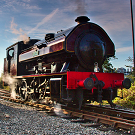
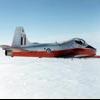
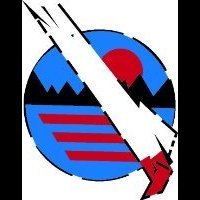

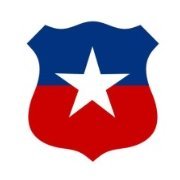

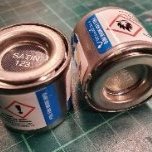



.thumb.jpg.3d6eff3e2f6cc042679bca864bcb2b1a.jpg)
